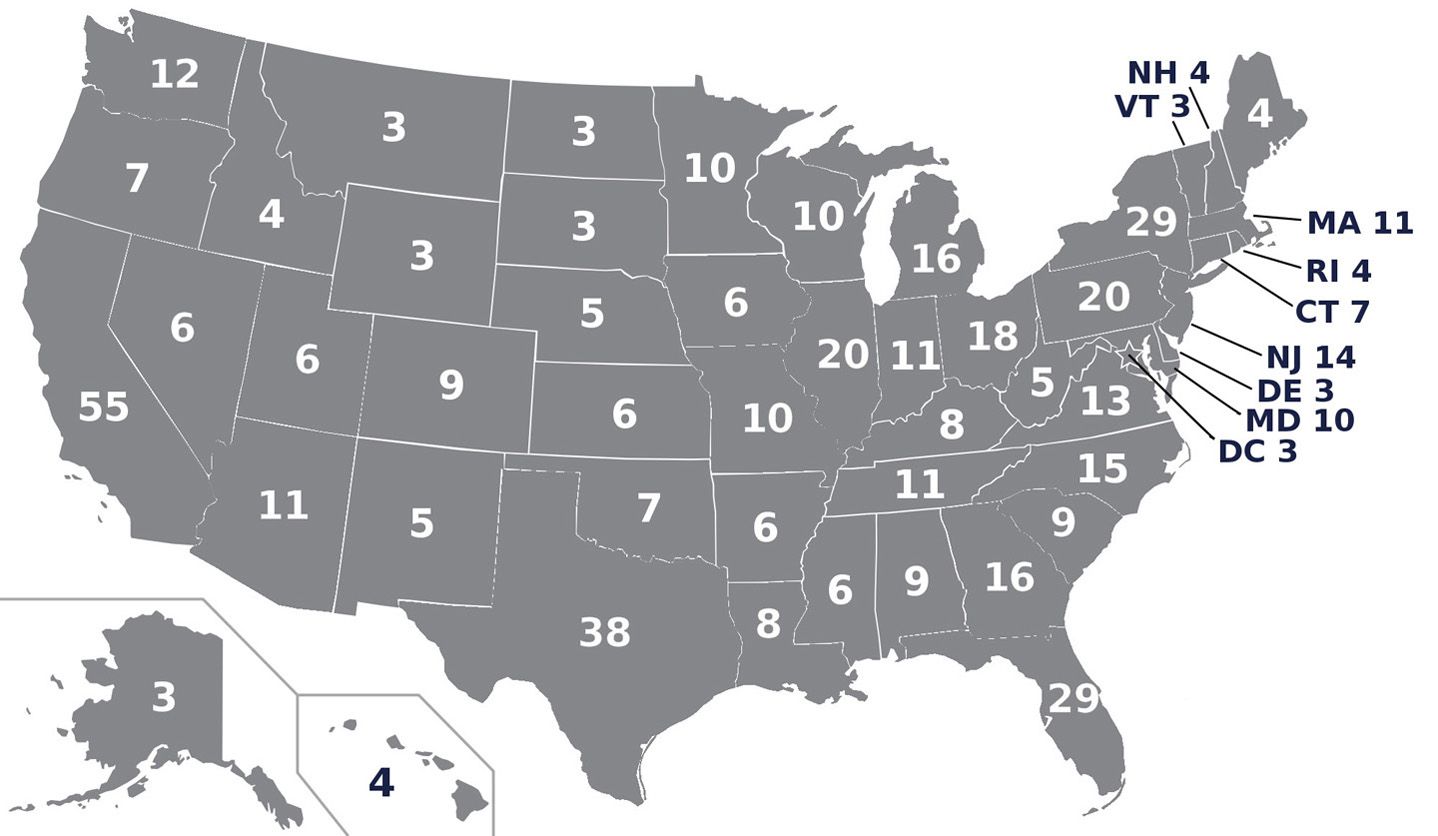At this point, there are several take ways in the 2020 presidential contest: (i) national polls mean little, and (ii) focus needs to remain on the list of states that in some combination will put the Democrat candidate over the 270 Electoral College number. But the combination of critical states varies and may or may not include the rust belt states where Trump's message of racism and shameless pandering to religious extremists caused voters to vote against their own economic interest. A piece in the Intelligencer looks at the possible routes to victory in an election that could well be the most important ever for America and by extension the world. Here are article excerpts:
The sizable gap between Donald Trump’s 304-227 Electoral College majority in 2016 and the paltry 46.1 percent of the popular vote he commanded (trailing Hillary Clinton’s 48.2 percent) has made political observers looking forward to the 2020 contest more focused than usual on state battlegrounds as opposed to the national balance of power. And obviously, most Democrats have obsessed about flipping the three Rust Belt states Trump won that shocked everyone: Pennsylvania and Michigan (Democratic since 1988) and Wisconsin (Democratic since 1984). That Democrats made gains in 2018 in these three states has made them a continued focus for 2020, and moderate presidential candidates Joe Biden, Pete Buttigieg, and Amy Klobuchar have emphasized their supposed strength in the Rust Belt.But all along there have been arguments for alternative routes to 270 electoral votes that might be open to a Democrat, and at Larry Sabato’s Crystal Ball, Seth Moskowitz has laid them out in fascinating detail.
As he notes, flipping back the three big Rust Belt states would require (with all else staying the same) a conversion of a mere 78,000 votes — or 1,690 popular votes per electoral vote. But there’s been a lot of talk lately about Wisconsin being more obdurate MAGA country than it was in 2016. So is there a simple way for Democrats to win with Pennsylvania and Michigan? Well, yes: If they can win Arizona, which Trump carried by 91,000 votes in 2016, that would get the job done.
There is an even simpler route for a Democratic electoral vote majority: flip Florida, one of the closest 2016 states (Trump won it by just under 113,000 votes), and flip Michigan, too, and the Democrat would win even if the GOP retained Pennsylvania, Wisconsin, Arizona, Georgia, and North Carolina.
And there are scenarios for a Democratic win that won’t count on any of the lost Rust Belt states, with 270-plus electoral votes built on a combination of flipping Arizona, Georgia, and North Carolina (requiring a net gain of 475,000 popular votes) or more simply Arizona and Florida (requiring just 204,000 additional net votes).
There’s even a contingency in which a Democrat could lose all three of the Rust Belt battleground states Trump won in 2016 — plus lose Arizona, Florida, Georgia, and North Carolina — but still get to 270 electoral votes by carrying blue-trending Texas.
The bottom line is that the Democratic path to victory in 2020 is no more preordained than was a Republican path in 2016 that we thought might require wins in places Trump ultimately lost like Nevada, New Hampshire, and Virginia. But it will remain true that no one should place too much stock in national polls unless the race becomes something of an unlikely blowout.

1 comment:
Note: The National Popular Vote bill is 73% of the way to guaranteeing the majority of Electoral College votes and the presidency to the candidate who receives the most popular votes in the country, by changing state winner-take-all laws (not mentioned in the U.S. Constitution, but later enacted by 48 states), without changing anything in the Constitution, using the built-in method that the Constitution provides for states to make changes.
It requires enacting states with 270 electoral votes to award their electoral votes to the winner of the most national popular votes.
All voters would be valued equally in presidential elections, no matter where they live.
Post a Comment